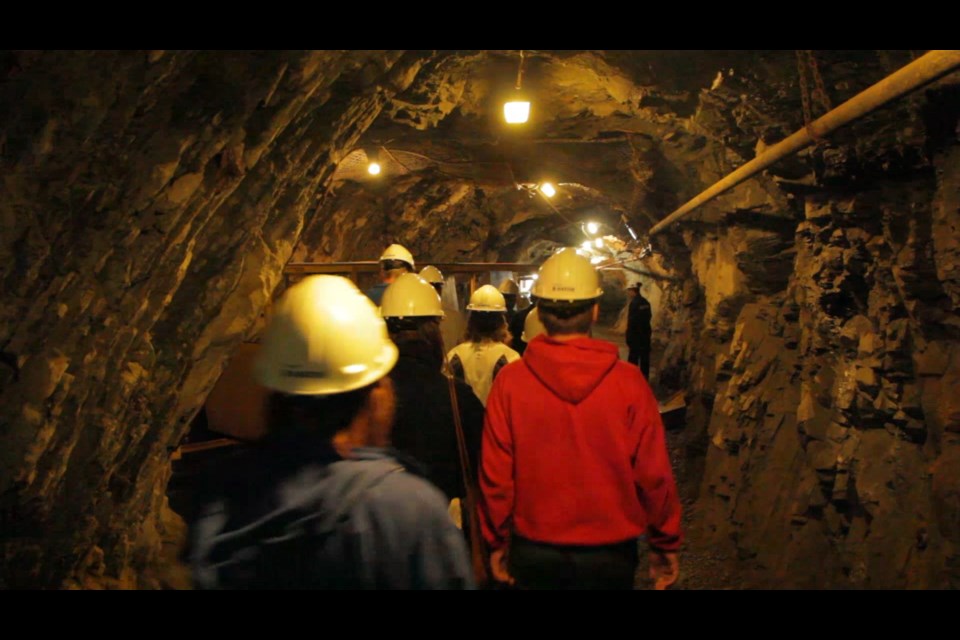While it might seem too coincidental for Sudbury to experience two seismic events in two days, a research scientist with Natural Resources Canada (NRC) said it’s unlikely the two incidents are warnings of a bigger quake to come.
On April 23, Earthquakes Canada reported a 3.6MN seismic event at 3:10 a.m. The seismic event was centred about three kilometres from Lively at a depth of about 2.4 kilometres. It was likely triggered by mining activity at Vale’s Creighton Mine, both and the miner stated.
Then, the next evening, a smaller, 3.0MN seismic event was registered at another Vale property, Garson Mine. The April 24 event happened at 9:44 p.m. and again, officials say mining activity — in this case a blast about four hours earlier — was the likely trigger.
Dr. Stephen Crane, a research scientist with NRC’s Canadian Hazards Information Service, said while it is true that having two events in such short succession is odd, it’s unlikely that they’re related, or indications of a larger event to come.
“Although it is uncommon and unlikely to have two seismic events in as many days, we do not believe there is cause for any more concern than usual,” he said. “These two events were far away from one another and are probably unrelated to one another. Coincidences like this do happen and they seem to happen frequently with earthquakes.
“Although it is possible for Sudbury to experience a larger earthquake, we do not think that these events are signalling that a larger one is coming. These events are likely caused by the mining above them and therefore within the usual bounds of mine-related seismicity in the area.”
How does mining trigger seismicity? For that, we spoke with Gilbert Lamarche, head of mines technical services for Vale’s North Atlantic Operations.
He explained that the rock under the ground in Sudbury that Vale is interested is a mix of things. There’s the ore a miner like Vale wants to extract, and that material is surrounded by a hard, but somewhat brittle, granite.
The rock is in a static state of stress and pressure. That static state is disrupted whenever an ore body is mined because blasting creates a void or open space that was once solid rock. This heightens the stress on surrounding rock structures and the structures built by mining companies.
“If that happens near a fault, the stress builds up and builds up, the fault slips and creates seismicity,” Lamarche said. “Seventy-five per cent of these occur after a blast. The stress in the ground is redistributed and the ground reacts soon after.”
Often that reaction occurs within minutes of blasting (though it can take longer; the Garson Mine event occurred several hours after blasting). That’s why when mines blast, workers are either on the surface or in a safe location. Vibration sensors located throughout the mine keep an eye (or ear) out for the smallest vibration.
And the deeper miners go, the more pressure and stress there is on the rock, leading to more potential for seismic events.
Of course, the type of rock under our feet matters, too. At Vale’s Thompson, Man., operations, you don’t see the kind of seismicity and bursts you see in Sudbury harder granite.
“In Thompson, for example, the rock isn’t as strong (as in Sudbury), so you see deformation” of rock structures instead of the type of rumbling you get in the Nickel City area.
Lamarche has a 20-person team of ground control specialists who investigate after seismic events. That team was dispatched to both Creighton and Garson to check the damage and ensure the environment was safe.
He said in his 13 years with Vale, as the miner has gone deeper and deeper into ground, the number of seismic events has gone up, but the amount of rock bursts has gone down, Lamarche said.
“We’re better at controlling the outcome,” he said.
That includes backfilling stopes with concrete and tailings after blasting, and reinforcing structures with rebar, bolts, steel screening and shotcrete (spray concrete).
He said last week’s seismic events only caused some minor damage. Workers had to scale down loose material and reinforce everything again, but that was about it.
And while seismically the events were small, how they feel depends a lot on where you happen to be standing, Lamarche said.
“When you feel it on the surface, can you imagine the feeling when you close to the epicentre?”
